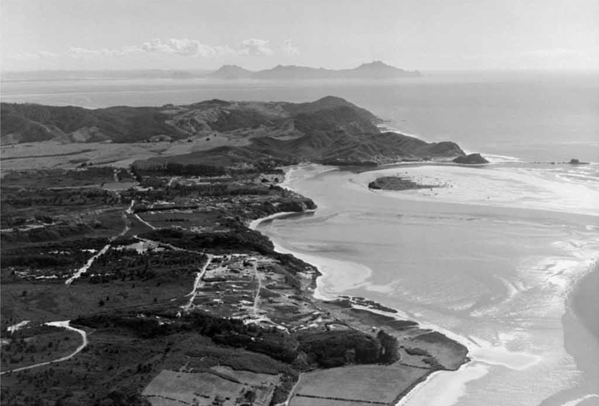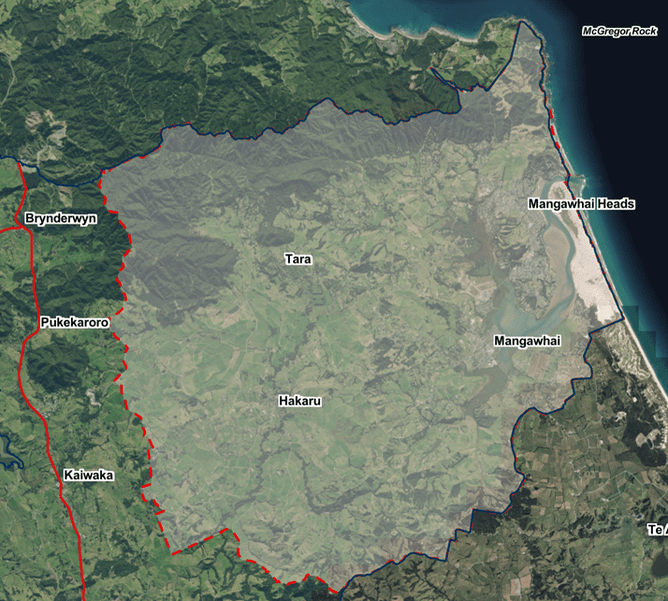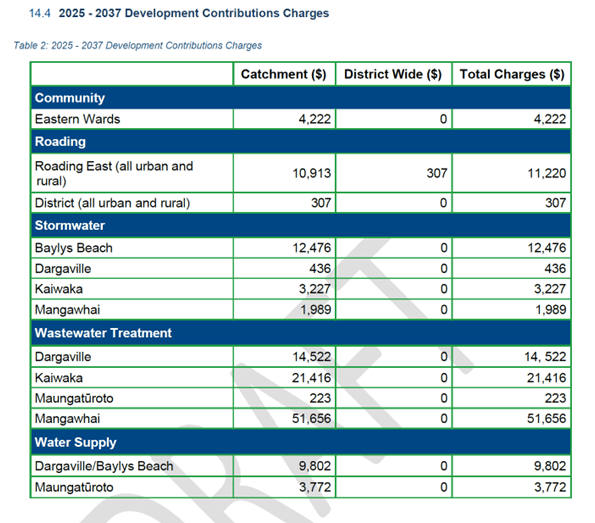Photo: Mangawhai Heads in 1962
One of the challenges in Council is managing high growth pressure in the Mangawhai area.
Concern about growth is certainly a matter raised by existing ratepayers.
As a Council we wanted to ensure that smaller towns in the west of the district had the freedom to grow and become more vibrant.
At the same time we wanted to ensure that Mangawhai continued to be a great place to live and visit without becoming overwhelmed with too many people. Mangawhai’s geography limits the ‘amenity capacity’ of the likes of the Heads beach carpark, the boat ramp, Molesworth Drive etc.
This needs to be balanced with having sufficient population that allows multiple high quality hospitality offerings to thrive year-round in the Kaiwaka and Mangawhai area.
Mangawhai-Hakaru Managed Growth Area
The district plan is the Council document that determines what can happen with subdivision and land use.
As a Council we formed a District Plan Working Group to make sure that we got the balance right through the district plan. The proposed district plan (PDP) has now been notified for submissions and is moving through the process towards hearings and consideration of submissions.
The PDP restricts the subdivision opportunities in the area from the Mangawhai coastline to about three kilometres east of Kaiwaka. In this area there is no opportunity to use the small residential lot rule and there is no rural lifestyle zone as are both available in the rest of the district. It also discourages further residential zooming beyond what is already contemplated through existing zoning.
This commentary here does not predetermine the outcome of the PDP process. The PDP has limited weight at this time landowners can still lodge applications to subdivide under the provisions of the current operative district plan (ODP).
Image: Mangawhai Hakaru Managed Growth Area
Development contributions
A second key component of managing Mangawhai growth pressure is ensuing that “growth pays for growth”. We have undertaken a thorough review of our development contributions (growth levies) to ensure the costs of growth don’t become a burden on current and future ratepayers.
The new contributions approved by Council yesterday (subject to any challenge) will be –
Image: KDC development contributions schedule
This equates to a total of $69,087 per lot in the Mangawhai community wastewater scheme area.
Dargaville is also anticipating growth and its anticipated total DCs will now be $25,067 per lot.
Reserve contributions
Council also collects financial contributions from subdivision for the acquisition of new reserves and the upgrading of existing reserves.
These funds are intended to compensate for the effects of growth in the area to provide for the new households resulting from subdivision.
This is another mechanism to ensure that ‘growth pays for growth’. However in past years these funds have been used to provide upgrades in both growth and non-growth areas.
Council updated the reserve contributions policy this year so that the funds will now used in the area that they are collected. This will also benefit other areas when growth occurs as the funds collected in those areas will also be used to provide local upgrades.
This doesn’t mean that areas with low growth will be neglected. When there are needs in those areas these can be funded from other sources including general rates and external funding for example the Tourism Infrastructure Fund (TIF).
Carefully managing growth in this way will ensure that Mangawhai doesn’t become overburdened by demand, and remains a highly desirable and increasingly vibrant place to live.





